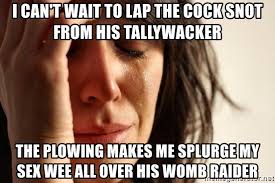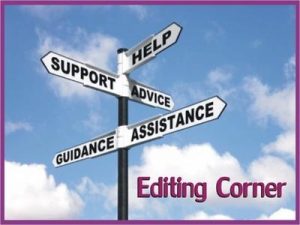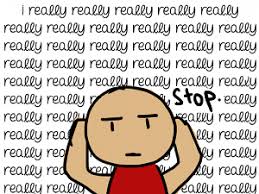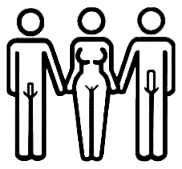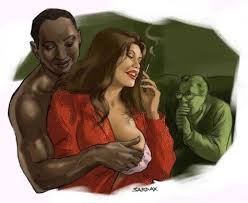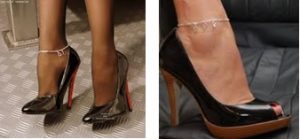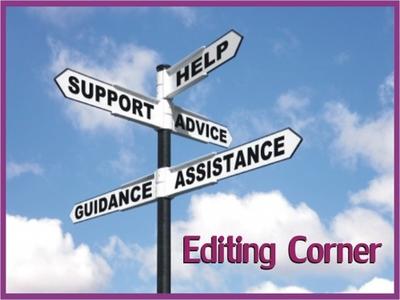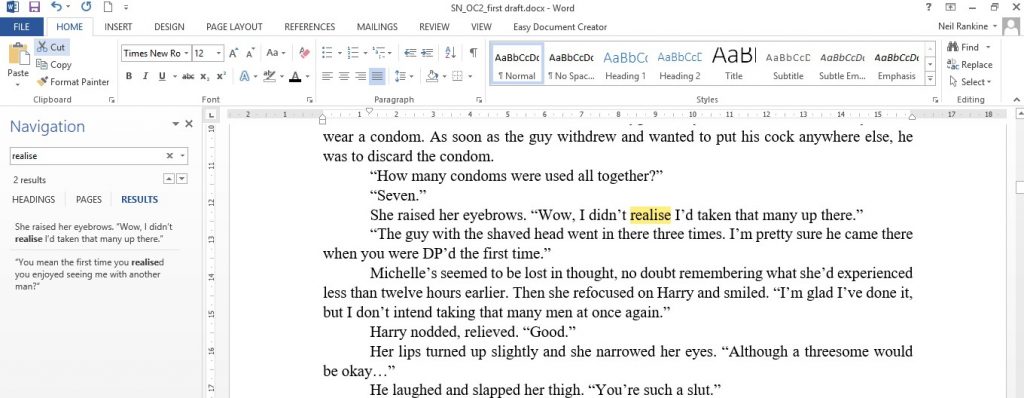For authors who write dirty stories, making the sex scenes ‘sexy’ is surely our ultimate goal. It’s no use having a clever plot that brings together a gorgeous babe and a well-hung stud if the nitty-gritty of their coupling doesn’t arouse the reader. Nobody enjoys an anti-climax.
When I submitted a story to Storytime a few months back, one reviewer mentioned that I’d referred to body fluids more than was necessary, and it was their comment that gave me the idea for this post.
So, how much of the sticky details do readers want in a dirty story? And how should we refer to the parts and fluids of the body?
I don’t know the answer, and suspect there probably isn’t one that satisfies all readers. Some people will be happy with: ‘He slid inside me and held me close until our souls collided in mutual bliss’, while other readers want something along the lines of: ‘I felt his huge cock forcing its way in, stretching me like I’d never been stretched before. Once inside, he fucked me with abandon, shredding my cunt with his onslaught and flooding me with his jism.’
Authors have their own views on how much detail they give for the ‘ins and outs’, and also have their own preferred terms. For me, both are equally important.
As a reader, I like to know the sensations that the characters experience during sex—both physical and emotional. I also like to be told exactly what’s happening at the business end of their coupling, and so that’s what I try and put into the stories I write.
Terminology
While romance readers may prefer less explicit prose, I don’t think readers of erotica are offended when they come across words like ‘cock’ and ‘cunt’. They’re my go-to nouns for gentleman- and lady-tackle, though I do slip in the occasional ‘dick’ and ‘prick’ for variety.
I’m also fond of the word ‘minge’. I’m a British writer, so ‘pussy’ just doesn’t sit right on my tongue (heh), though as a reader I have no problem with it. In the UK, I think the most common slang term for the lady-parts is ‘fanny’, but that doesn’t translate well in the US (imagine my reaction whilst visiting Chicago when an American referred to my wife’s ‘fanny pack’).
I find anatomical names like penis and vagina in erotica to be mood killers, so I avoid those.
For male ejaculate, I use ‘cum’ or ‘jizz’, and occasionally the Brit-friendly ‘spunk’. Semen’s okay, but I think ‘seed’ and ‘sperm’ are more appropriate if possible fertilisation is the kink. Women have ‘juices’.
Every writer has their preferences and, for the most part, I’m happy to follow a story without getting too wound up on their choice of terms unless they’re something ridiculous, like ‘his love truncheon’ or ‘her scented love grotto’.
And I guarantee I’ll never use dialogue like, “Hey, Penelope. How’d you like to ride my purple pony to Pleasure Town?” or “Yo, Errol. Can I take that choo-choo of yours all the way to Orgasm Central?”
Another aspect of body parts is how much detail you go into when you describe them.
A couple of years ago, a guy wrote to me to say how much he’d enjoyed a cuckold story I’d written. I was actually in the middle of writing the sequel at the time, so when I replied to thank him, I offered him the chance to read what I’d written so far. He eagerly accepted and we swapped emails regarding the story until I’d finished it. One thing he suggested was that I had my hotwife mention the different smells and tastes of the bulls she experienced as she pulled back their foreskin. I confess that I didn’t follow his suggestion because I don’t find those details sexy. Where cocks are concerned, my description tends to be minimalist, leaving things to the reader’s imagination. At most, I might refer only to size, where the kink makes it relevant, or make the occasional mention of a curve one way or another. I don’t think I’ve ever specified whether or not there’s a foreskin. Where women are concerned, I tend not to go any more detailed than boob size, nipple shade and pubic hair appearance (or lack of).
Coupling
Physical descriptions of their relative positions are important because I like to visualise the scene. I also like to read the sensations of the POV characters, and the physical reactions and expressions of the non-POV characters.
As for the emotional side: Who cares?
Just kidding. What’s going on inside the characters’ heads is a big part of the sexiness. Much of what I read and write is in the wife-sharing genre, and these stories thrive on the characters’ feelings. Whether a husband is watching his wife with another man, or the hotwife’s experiencing her bull while her husband watches, their thoughts are just as sexy to me as the slippery pink parts.
Body Fluids
Returning to the opening question, do we actually need to mention them at all?
I suppose the answer is ‘no’: I’ve read some wonderful sex-scenes where the descriptions are super-erotic without any explicit mention of the body fluids produced. Then again, the nature of the kink in the story does create some reader expectations. If you’re writing a story about creampies, or the story involves a cuckold clean-up scene, then a focus on the fluids becomes mandatory.
The pace of a scene also dictates how much description you can get away with; while the choreography might be moving too fast to be thorough about including details like taste and texture, the physical appearance and placement of a well-aimed dollop can contribute a lot to a scene.
Some authors are really good at making the most basic of human instincts and actions sound sexy. Of many examples, one that still sticks in my mind (about a year and a half after I first read it) is a description from Belinda LaPage’s Group Therapy in the second ERWA anthology, Twisted Sheets:
‘He snugged his convulsing balls tightly between the woman’s labia, and with a groan and some long, arching heaves, he painted two, three, four coats of high-gloss white on her ceiling.’
I think this is fabulous; while neither explicit nor crude, this conjures up the image of him coming inside her in a unique and very sexy way.
For me, good erotica involves a detailed description of the sex scene. If the author can express the feelings, sensations and reactions of the characters in a sexy way, it makes the scene work. If they can also describe the physical ‘comings and goings’ in a way that’s implicitly erotic, then it elevates the scene into something much more arousing than a Readers’ Wives confession-type thing.
I guess I can’t let the subject of body fluids pass without the mention of condom-use in erotica. There are two sides to the argument: some readers dislike the characters who take unwarranted risks, and others say they read for escapism, not realism.
I’ve written stories where the characters use condoms and stories where they don’t. I’ve also used plots where condoms are discussed but then discarded because their use does not fit the kink (such as the taboo of a married hotwife taking a bull bareback). It comes down to the author’s preference for that particular story.
However much I argue for author’s personal choices, it does appear that there are some things which readers don’t want to see in any dirty story. When I was doing some research for this post, I looked at a few websites that list elements in ‘bad erotica’. Below is a short list, in no particular order, of things readers don’t like:
- writers who refer to the phallus entering inside the cervix or the womb or uterus
- writers who confuse “prostate” and “prostrate”
- hands, feet and dicks which undermine the characters’ brains and do things all by themselves
- bad choreography (forgetting critical things like height difference)
- lengthy flashbacks about exes in the middle of a sex scene
- terms such as ‘exploding nipples’ and ‘weeping vaginas’
- the term ‘cock snot’
It’s a relief not to have committed all these writing crimes, though it’s a shame I have to go back to my WIP and remove every single reference made to my MC’s cock snot…





